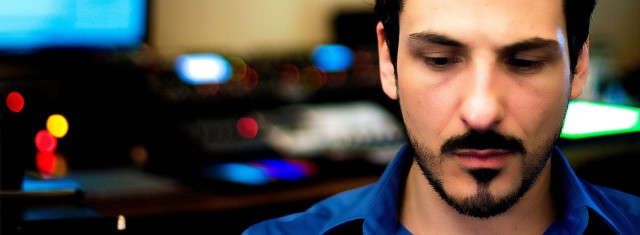Ableton Live and Ableton Push afford new ways of working, allowing you to put loads of parameters beneath your fingertips. Of course, the means of doing that may not be immediately obvious, behind the dance between grid, encoders, and automation envelopes.
Leave it to Montevideo-born, virtuoso dance music maestro Gustavo Bravetti to show us how it’s done.
Gustavo pairs the MeeBlip SE, the enhanced “digital freak” original version of our synth, with Live and Push. To connect the hardware with automation of the external synth, he uses a Max for Live patch for the MeeBlip (which you’re free to download yourself if you own the MeeBlip/MeeBlip SE).
(The MeeBlip is not the first open source synth, as the video might imply, but could be considered the first widely-produced, ready-to-play hardware synth to be under a fully open source hardware license; others were available in kit form.)
The lessons here, though, work in any hardware synth. And you could also apply them to controllers other than Push, if you prefer.
In particular, note some particular tips:
- The Max for Live device automates sounds on a single voice by associating melodic steps with different sound presets.
- Preset automation will overwrite live tweaking, so you can tweak variations freely.
- Built-in morphing in his patch creates still more variations.
- You can use this as either a live performance tool or an arrangement tool – and even get obsessive with the latter, since it writes automation envelopes into your arrangement.
Check out the MeeBlip SE Remote patch – for your MeeBlip or another synth, if you feel like learning from it.
Meeblip Se Remote 1.0
It’s funny to hear the original MeeBlip again, as I mostly spend time these days with MeeBlip anode, which is now in stock from us and various dealers in America and Europe. (A sale is on now for US$/EUR€ 129.95.) The original character is still in anode, but the unruly temper is more of the desirable variety, thanks to the new analog filter and streamlined design. (We also abandoned presets, which work better here in software.) And Gustavo promises an anode version soon.
Full description from Gustavo:
The Meeblip Se is an incredible synthesiser with a very interesting and distinctive sound. This sound is produced by (at first sight) a relative simple sound engine… but once you start playing whit its possibilities you realise that this little digital freak with an occasionally fretful temper, has a defined personality capable of a wide range of sonic possibilities.
The Meeblip Se default preset system can store up to 16 presets. To store and recall them, you have to use a combination of buttons and switches. Thinking on use it on my live performances, the Meeblip Se’s default preset’s system seems at first sight to be short-legged, unpractical, and overcomplicated, and in fact… kinda it is!
After creating dozens of very interesting and useful sounds on my Meeblip Se, and realising that most of them was lost in action, I decided to work on an alternative to store, recall and organise my Meeblip Se’s presets. Because I want to use the Meeblip Se on my live shows I also need to be able to recall those presets remotely and/or automatically in any given moment. At last but no least, I want to be able to control all the Meeblip parameters from a most informative surface controller, the Ableton-Akai Push Controller.
Lucky me that all parameters on the Meeblip Se can be controlled with MIDI CCs, the answer was pretty clear, a device in MaxForLive would be able to do all what I need an much more… and that is was bring us here.
Gustavo is an extraordinary producer – proof positive that you can mix hackery with the kind of dance prowess to move festival-sized crowds, all as one artist. (No, he’s not hiring teams of nerds. He’s entirely DIY.) Follow him on Facebook:
https://www.facebook.com/gustavobravettilive
And I hope we hear more from him soon.
